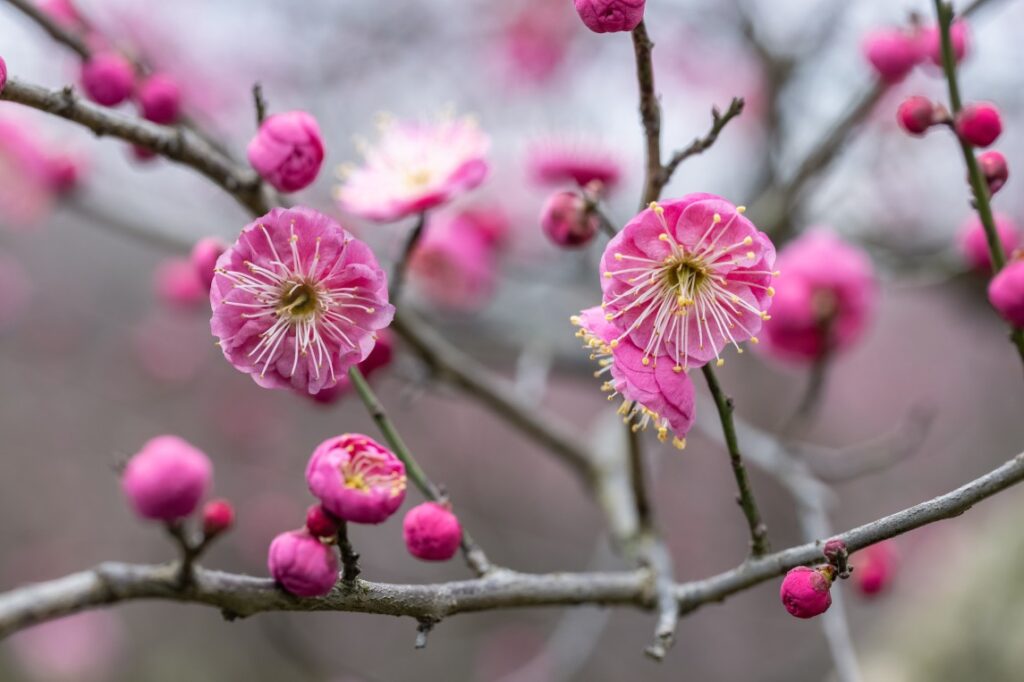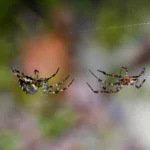Soft pink petals dancing in the breeze are among the first whispers of spring, and few trees capture this magic like plum blossoms. These flowering beauties bridge the late winter to spring transition with astonishing grace, making them an exceptional addition to American gardens. Their early bloom time, exquisite beauty, and rich cultural symbolism have made plum blossoms a cherished ornamental choice across the globe—and increasingly, a favorite among homeowners looking to add subtle drama and seasonal flair to their outdoor sanctuaries.
Why Choose Plum Blossoms for Your Garden?
Plum blossoms are distinguished by their delicate yet hardy nature. Flowering before many other spring trees, they offer striking visual impact during that grey shoulder season between winter and spring. Homeowners in the United States, particularly in USDA Zones 4 through 9, find these trees to be suitable for a wide range of climates.
Their value runs deeper than aesthetics. Plum blossoms symbolize renewal, resilience, and beauty through hardship. Just as the coldest winters fade, these blossoms are often the first to arrive, reminding us that brighter days are near.
From a gardening perspective, they offer manageable care needs, a relatively compact growth habit (especially the ornamental varieties), and longstanding appeal in both traditional and contemporary landscapes.
Choosing the Right Variety of Plum Blossoms
Not all plum trees are created equal when it comes to decorative blooms. For gardens designed with aesthetics in mind rather than fruit production, ornamental cultivars are the preferred choice. Below are several standout varieties:
Japanese Flowering Plum (Prunus mume)
- Native to East Asia, adored for centuries.
- Blooms in late winter or early spring, often before leaves emerge.
- Flowers range from icy white to deep pink and even red.
- Strong, spicy fragrance that perfumes the air.
- Hardy in Zones 6–9.
Thundercloud Plum (Prunus cerasifera ‘Thundercloud’)
- Offers a beautiful contrast with purple foliage and pale pink flowers.
- Slightly later bloom time, typically early to mid-spring.
- Reaches 15–25 feet in height.
- Suitable for smaller yards and urban gardens.
Krauter Vesuvius
- A cousin of the Thundercloud Plum with slightly darker leaves and compact stature.
- Ideal for structured landscapes wanting a dramatic, sculptural touch.
When selecting a tree, consider bloom time, size at maturity, flower color, and whether or not you want fruit. Some ornamental plums are sterile, ensuring no mess from fallen fruit, which suits low-maintenance gardeners.
Planting and Site Conditions for Healthy Blossoms
Getting the best from plum blossoms begins with selecting the right site. These trees thrive in full sun, requiring at least six hours of direct light daily. Good air circulation and well-draining soil are equally vital to keep disease at bay.
Steps to Ensure Proper Planting
- Location: Choose a site that’s shielded from harsh, drying winds but still airy enough to prevent fungal issues.
- Soil Preparation: Slightly acidic to neutral pH is ideal. Amend heavy clay soil with compost for drainage.
- Planting Hole: Make it two to three times the width of the root ball but no deeper.
- Backfill and Water: Fill with native soil mixed with compost and water deeply to eliminate air pockets.
Early spring or late fall are the best times for planting, depending on your zone. The important thing is to avoid the frost-heavy weeks that could stress young roots.
To enrich your spring garden further, consider pairing plum blossoms with complementary textures such as tiny white flowers or early-blooming bulbs like crocus and narcissus.
Caring for Plum Blossoms Through the Seasons
Once they’re established, plum blossom trees require relatively low maintenance. However, a bit of seasonal care ensures they remain vigorous and flower abundantly.
Spring
- Monitor new growth for aphids or leaf curl.
- Mulch around the base to retain moisture and suppress weeds.
- Avoid over-fertilizing during bloom time, as it can reduce flower production.
Summer
- Water during dry periods (especially the first few summers).
- Prune lightly to remove any suckers or overly dense branches, allowing air to circulate.
Fall
- Apply a slow-release, balanced fertilizer if the tree appeared weak in spring.
- Remove fallen leaves consistently to prevent overwintering pests.
Winter
- In colder areas, wrap young trees with a breathable tree wrap to prevent frost cracks.
- Avoid late pruning that may encourage tender regrowth vulnerable to frost damage.
For gardeners looking to diversify, introducing other blossoming trees alongside plum blossoms—like the pink magnolia—can amplify seasonal impact with staggered flowering times.
Common Pests and Diseases
While generally hardy, plum blossom trees aren’t immune to issues. Being proactive about plant health helps avoid most serious problems.
- Black Knot Fungus: Characterized by black clumps on branches. Prune infected areas well below the knot and burn the debris.
- Aphids: These pests commonly target new growth. Use a strong hose spray or neem oil treatment.
- Leaf Spot: Fungal manifestation seen as speckled discoloration. Improve air circulation and avoid overhead watering.
Selecting disease-resistant cultivars and practicing annual pruning (ideally after flowering) markedly reduce most insect and disease pressures.
Styling with Plum Blossoms
The visual poetry of plum blossoms goes beyond solitary tree planting. They can bring flair to structured gardens, evoke nostalgia in cottage landscapes, or add zen-like tranquility to minimalist yards.
Landscaping Tips:
- Focal Point Planting: Place a tree where it can be viewed from indoor living spaces or garden seating areas.
- Allee Style Paths: Line a walkway or garden path with several trees for a dramatic seasonal entrance.
- Mixed Borders: Combine with licorice plant or other silvery foliage for color contrast.
Serious design buffs can even coordinate their interiors with nature. Imagine looking out from a living area featuring beamed ceilings onto the delicate tassels of blooms outside.
Surface-level beauty aside, these landscape design choices can elevate not just a yard but a lifestyle rooted in seasonal appreciation.
Plum Blossoms in Container Gardening
For those with smaller spaces, such as patios or urban balconies, dwarf flowering plum varieties can be grown successfully in containers. Choose a pot that’s at least 24 inches in diameter, with ample drainage.
- Use a lightweight, well-aerated potting mix.
- Water consistently but ensure soil is never soggy.
- Re-pot every two to three years to refresh nutrients and prevent root bind.
Pair with other container-friendly plants like succulents. Our guide on creating a garden of succulents has handy tips for thoughtful combinations.
Cultural and Historical Appeal
Plum blossoms hold a special place in art, poetry, and folklore. In Chinese traditions, they represent endurance, courage, and hope. This timeless symbolism makes them more than just an ornamental; they become a meaningful expression rooted in human experience.
Displaying plum blossoms—or even incorporating them into hand-painted garden trellises, fabric textiles, or seasonal tablescapes—can reinforce intentional living around the rhythms of nature.
Conclusion
Plum blossoms capture what so many of us strive for in our gardens: perspective, resilience, and quiet beauty. Whether planted as stand-alone icons in a serene backyard or woven into the rhythm of springtime transitions with other flowering species, these trees reward careful attention with unforgettable results.
From their early return after winter to their ability to blend seamlessly with a variety of garden styles and scales, plum blossoms invite a graceful presence into our lives. For those feeling the call to make their outdoor spaces feel more harmonious, rooted, and inspired, this might just be the season to welcome a plum blossom tree into your home garden.



